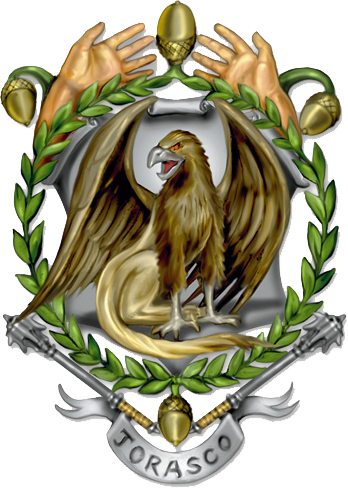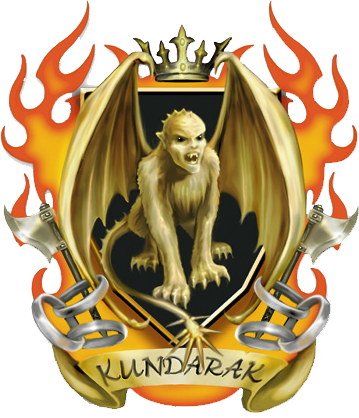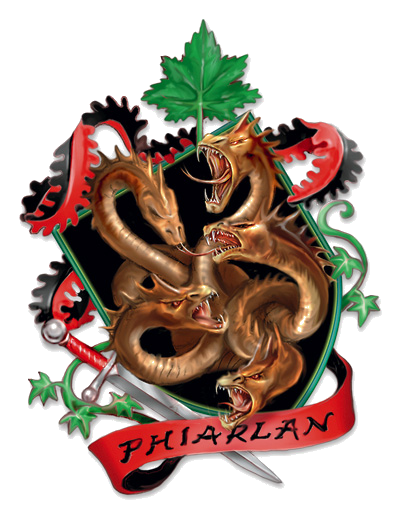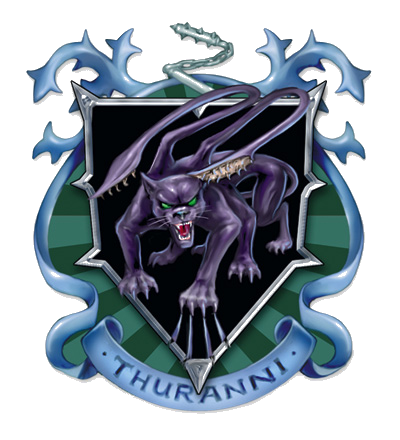Dragonmarked Houses
Dragonmarked Houses are extended families of a single race whose members sometimes manifest dragonmarks. They often have a near-monopoly on certain kinds of businesses and are considered neutral in any affairs between the nations of Khorvaire.
Their collective "governing" body is The Twelve
| Dragonmark | House | Race | Guild Specialties |
|---|---|---|---|
| Detection | Medani | Half-Elf | Bodyguards, Investigation, Risk Management |
| Finding | Tharashk | Half-Orc | Bounty Hunting, Investigation, Prospecting |
| Handling | Vadalis | Human | Animal Training and Breeding |
| Healing | Jorasco | Halfling | Healing |
| Hospitality | Ghallanda | Halfling | Food, Lodging, Urban Information |
| Making | Cannith | Human | Manufacturing, Invention |
| Passage | Orien | Human | Land Transportation, Teleportation |
| Scribing | Sivis | Gnome | Communication, Translation, Verification |
| Sentinel | Deneith | Human | Bodyguards, Mercenaries |
| Shadow | Phiarlan | Elf | Entertainment, Espionage |
| Shadow | Thuranni | Elf | Entertainment, Assassination |
| Storm | Lyrandar | Half-Elf | Air and Sea Transportation |
| Warding | Kundarak | Dwarf | Banking, Storage, Prisons |
Structure
With the exception of House Tharashk, the ultimate power within a dragon marked house is held by a single individual, typically known as a baron.
Beneath the baron stands the lords seneschal, who oversee all operations within a particular country; the viceroys, who manage regions within a country; the ministers, who manage house affairs; and the masters, who maintain the guilds. Any member of a dragon marked house who has a dragon mark is allowed to use the honorary title of “lord” or “lady,” but the presence or absence of a mark on someone has no effect on that individual’s standing within the house. The dragon marked Lord Carren d’Cannith could end up working the bellows of a forge, while the unmarked Cainan d’Cannith rises to the rank of viceroy. The mercantile holdings of a house are split, with one portion staffed entirely by members of the house and the other made up of the licensed businesses of the house’s guild. A smith licensed by House Cannith will put that house seal on his trade sign. However, the smith is not a member of House Cannith. Most of the artisans and labourers of Khorvaire fall into this category—licensed and often trained by one of the houses, but not bound to them by blood.
Beneath the baron stands the lords seneschal, who oversee all operations within a particular country; the viceroys, who manage regions within a country; the ministers, who manage house affairs; and the masters, who maintain the guilds. Any member of a dragon marked house who has a dragon mark is allowed to use the honorary title of “lord” or “lady,” but the presence or absence of a mark on someone has no effect on that individual’s standing within the house. The dragon marked Lord Carren d’Cannith could end up working the bellows of a forge, while the unmarked Cainan d’Cannith rises to the rank of viceroy. The mercantile holdings of a house are split, with one portion staffed entirely by members of the house and the other made up of the licensed businesses of the house’s guild. A smith licensed by House Cannith will put that house seal on his trade sign. However, the smith is not a member of House Cannith. Most of the artisans and labourers of Khorvaire fall into this category—licensed and often trained by one of the houses, but not bound to them by blood.
Excoriation
On occasion, the baron of a dragonmarked house banishes a member of the house who has committed a major crime or brought terrible dishonor on the house. In the past, the process of excoriation involved cutting away the dragon mark of the offender, which often resulted in death. Today, excoriation does not carry physical punishment, but an excoriate cannot hold any rank in the house or make use of the house’s name or its resources. Members of all dragon marked houses are forbidden to aid or associate with an excoriate of any house.Remove these ads. Join the Worldbuilders Guild






















Comments